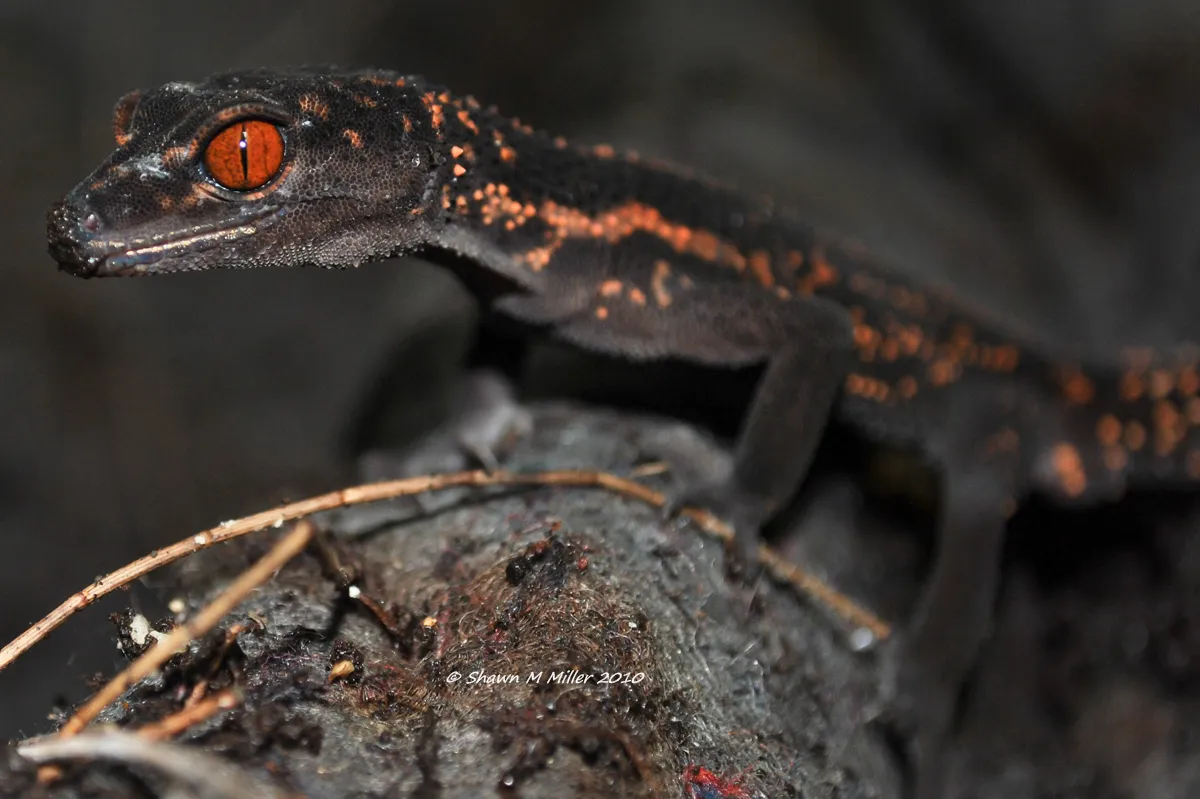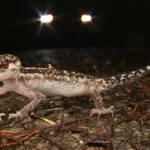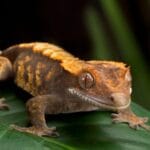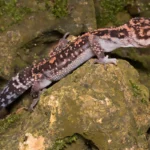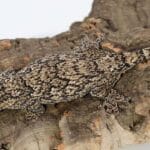Imagine a world where the sun sets and a different set of creatures come out to play. Among these creatures is the Kuroiwa ground gecko (Goniurosaurus kuroiwae), a remarkable lizard perfectly adapted for a life lived in the shadows. With its large, sensitive eyes and incredible camouflage, this gecko has mastered the art of thriving in the dark. Join us as we venture into the gecko’s nocturnal world, uncovering the secrets of its nighttime behavior and the fascinating adaptations that allow it to rule the night.
Is the Kuroiwa Ground Gecko a Night Owl or a Day Tripper?
The Kuroiwa ground gecko is a true creature of the night, a nocturnal ninja of the subtropical forests of the Indo-Malayan realm, including the Ryukyu Islands of Japan. As dusk descends and shadows grow long, the Kuroiwa ground gecko awakens, emerging from its daytime hiding places to hunt for insects and other small creatures that become active under the cover of darkness.
This nocturnal lifestyle offers several advantages. Firstly, it allows the gecko to avoid the harsh daytime sun and the elevated temperatures of its subtropical habitat. Secondly, venturing out at night reduces the risk of encountering diurnal predators, such as birds of prey, that are active during the day.
These geckos are not just functionally adapted to the night; they are also masters of disguise. Their mottled brown skin acts as a natural camouflage, rendering them nearly invisible amongst the fallen leaves and forest floor debris.
Sadly, despite their secretive nature and adaptations, these incredible creatures are facing increasing threats. Two subspecies in Japan are critically endangered, their populations dwindling due to habitat loss and fragmentation. Understanding and protecting these nocturnal ninjas is crucial, as they play a vital role in the delicate balance of their ecosystem.
Unveiling the Kuroiwa Ground Gecko: Nocturnal or Diurnal?
The Kuroiwa Ground Gecko’s preference for the night classifies it as a nocturnal species, a characteristic shared by many of its gecko cousins, particularly those that are ground-dwelling, like the leopard gecko and crested gecko. However, the gecko world is diverse, and not all geckos share this preference for the darkness. Over 430 species of gecko are diurnal, meaning they are active during the day. These sun-loving geckos are primarily found in Mauritius, Madagascar, and other western Indian Ocean islands.
The dominance of diurnal geckos in these regions, and their relative scarcity in other parts of the world, particularly the Western Hemisphere, is thought to be linked to competition with treefrogs. Scientists believe that the abundance and diversity of treefrogs in the Western Hemisphere may have led to competitive exclusion, pushing many gecko species to adopt a terrestrial, nocturnal lifestyle to avoid direct competition for resources.
The adaptations that allow the Kuroiwa Ground Gecko to thrive in darkness are a testament to the power of natural selection. Their eyes, for example, are particularly well-suited to low-light conditions, possessing a high density of rod cells that enhance their sensitivity to even the faintest glimmer of light. Their hearing is equally impressive, allowing them to detect the minute sounds of insects moving through the leaf litter.
The Kuroiwa Ground Gecko’s nocturnal lifestyle is a perfect example of how animals adapt to their environments to survive and thrive. By studying these adaptations, we gain valuable insights into the intricate web of life and the delicate balance that exists within ecosystems.
To learn more about another fascinating gecko species, check out this article: Tokashiki gecko facts.
Understanding the Nightlife of the Kuroiwa Ground Gecko: Adaptations and Behaviors
The Kuroiwa ground gecko is not merely a passive observer of the night; it is an active participant, shaping its environment and interacting with other creatures through a unique set of adaptations and behaviors.
One of the most striking features of this gecko is its exceptional camouflage. Its mottled brown skin doesn’t just help it blend into the forest floor; it allows it to practically disappear, making it incredibly difficult for predators to spot and giving it a significant advantage when ambushing prey.
Beyond camouflage, these geckos possess a secret weapon: sound. While we might imagine the forest floor as a silent place, the Kuroiwa ground gecko fills it with a symphony of chirps, clicks, and calls. These vocalizations are essential for communication, allowing them to defend their territory, attract mates, and warn others of potential danger.
Their territorial nature is another key aspect of their behavior. Each gecko fiercely defends its home range, ensuring access to vital resources such as food, shelter, and potential mates. This territoriality, combined with their nocturnal habits, makes them fascinating subjects for studying animal behavior and the complexities of life in the dark.
To learn more about the physical characteristics of the Kuroiwa Ground Gecko, click here: Kuroiwa ground gecko description size.
Kuroiwa Ground Gecko vs. Diurnal Geckos: A Tale of Two Lifestyles
The Kuroiwa Ground Gecko’s nocturnal lifestyle stands in stark contrast to the sun-drenched lives of diurnal geckos. Diurnal geckos, such as many species within the genus Phelsuma, have evolved a suite of adaptations that allow them to thrive in brightly lit environments. Their eyes, for example, possess a high density of cone cells, enabling them to perceive a wider range of colors and distinguish fine details, essential for foraging and navigating their vibrant surroundings.
While nocturnal geckos like the Kuroiwa rely on camouflage to avoid predators, diurnal geckos have evolved a different strategy: standing out. Many diurnal species sport vibrant colors and patterns that serve as a warning to potential predators, advertising their toxicity or unpalatability.
This tale of two lifestyles highlights the incredible diversity within the gecko family and their ability to adapt to a wide range of ecological niches. The evolution of diurnality in geckos is a testament to their adaptability and resilience, demonstrating their capacity to thrive in diverse habitats and exploit a variety of resources.
The Kuroiwa Ground Gecko, with its secretive nature and fascinating adaptations, serves as a reminder of the hidden wonders that exist within our world. By understanding and appreciating these creatures, we not only gain a deeper understanding of the natural world but also contribute to the preservation of these unique and irreplaceable species.
- Mastering Leader in Spanish: The Complete Guide - April 19, 2025
- Uncovering Surprising Parallels: England Size Compared to US States - April 19, 2025
- Old Mexico Map: Border Shifts 1821-1857 - April 19, 2025
